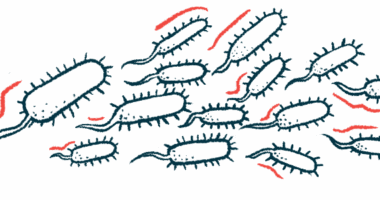4 common questions often asked of those of us living with CAD
How I've come to handle my answers to these repeated, basic queries

A student was waiting at my desk as I walked into the classroom. I smiled as I dropped my books on the desk and looked at her expectantly. She’d been absent the previous day.
“Mrs. Lott, did we do anything while I was gone?”
That was a stupid question. My tongue bled as I stopped myself from replying, “No. Your absence devastated us so much that we shut down the whole school and everybody went home.” That quick answer could’ve embarrassed her. Her real, hidden question probably was “What work do I need to make up?”
I’ve learned that quite often, the reason for seemingly stupid questions is not readily apparent. Those of us with cold agglutinin disease (CAD), just like teachers, get asked many questions that may seem stupid because we hear them over and over. Yet the questions may stem from genuine concern.
Oh, the questions
One question I hear most often about CAD is “Why can’t you just put on more clothes?” This one is usually asked by people who’ve just learned that exposure to cold weather can initiate our hemolyzing, or the destruction of our red blood cells. For us, it can be the hardest answer to explain.
Of course, CADdies, as we with CAD call ourselves, do put on more clothes. I wear quilted outfits in cold weather, and I look like the Stay Puft Marshmallow Man from the movie “Ghostbusters.” Dressing like that isn’t very practical for movement, nor does it address the complete problem: CADdies must be careful about breathing cold air.
The surface area of the lungs, according to the American Lung Association, is about the size of a tennis court, and the total length of airways running through them is the distance of Chicago to Las Vegas. On that surface is a matrix of capillaries so oxygen can mix with blood. If they’re getting hit with an Arctic blast, all those red cells begin hemolysis.
A related question is “What’s so bad about being cold?” The speaker often follows up with all the invigorating possibilities and memories of crisp autumn mornings and glistening frost on the ground. That’s all well and good — for the speaker. For me, it’s feeling shards of ice in my throat as I breathe in the cold air and shiver even in my lined hoodie and mukluks.
A third question asked frequently is “Can’t you just take iron to get over your anemia?” People are always anxious to help. They mean well. However, not all anemias are caused by an iron deficiency.
Before I was diagnosed with CAD, I followed some bad advice and took extra iron to make up for what I thought I lacked. When my medical team found out, I received very strong orders to stop doing that immediately. One of my early blood reports showed that I had extremely high iron levels, which could lead to more medical challenges.
Finally, we with CAD might be asked, “Since levels in your blood need to be monitored, why can’t you simply go to any laboratory and have your bloodwork done there, with the results sent to your doctor for interpretation?” In such cases, I explain to the friend that not all laboratories know how to handle blood with active cold agglutinins.
Look for the hidden, real questions
These questions can be irritating because of their repetition. Their answers are basic considerations when I decide where, when, and how to receive medical care. I’ve certainly thought through these issues; I assume many CADdies have, too. It’s easy to forget, though, that what seems basic to me might cause friends sincere concern. They’d like to help. I need to look beyond what seems to be a stupid question and turn the questioner into a member of my support team.
Just as I had to listen carefully to hear the real question behind my student’s voiced question, I need to be sensitive to the concern behind my friends’ queries, too. Therefore, I try to have ready “elevator answers,” which could be given in the space of an elevator ride. The friends don’t need to be overwhelmed with information, but they’re genuinely concerned. After all, CAD is a rare disease. People just don’t know about it. I must teach them.
Note: Cold Agglutinin Disease News is strictly a news and information website about the disease. It does not provide medical advice, diagnosis, or treatment. This content is not intended to be a substitute for professional medical advice, diagnosis, or treatment. Always seek the advice of your physician or other qualified health provider with any questions you may have regarding a medical condition. Never disregard professional medical advice or delay in seeking it because of something you have read on this website. The opinions expressed in this column are not those of Cold Agglutinin Disease News or its parent company, Bionews, and are intended to spark discussion about issues pertaining to cold agglutinin disease.







Leave a comment
Fill in the required fields to post. Your email address will not be published.